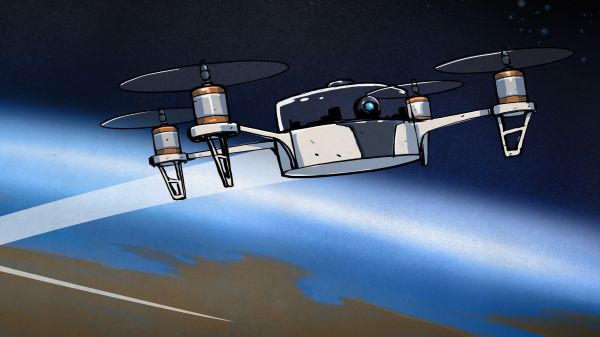If new rules from the FAA regarding unmanned aircraft operations in the US are any indication, drones are becoming less of a niche hobby and more integrated into everyday life. Of course, the devil is in the details, and what the Federal Aviation Administration appears to give with one hand, it takes away with the other.
The rule changes, announced on December 28, are billed as “advanc[ing] safety and innovation” of the drone industry in the United States. The exciting part, and the aspect that garnered the most attention with headline writers, is the relaxation of rules against night operation and operating above people and moving vehicles. Since 2016, it has been against FAA regulations to operate drones less than 55 pounds (25 kg) at night or over people without a waiver. This rule can be seen as stifling innovations in drone delivery, since any useful delivery service will likely need to overfly populated areas and roadways and probably do so at night. The new rules allow these operations without a waiver for four categories of drones, classified by how much damage they would do if they were to lose control and hit someone. The rules also define the inspection and certification regimes for both aircraft and pilot, as well as stipulating that operators have to have their certificate and ID on their person while flying.
While this seems like great news, the flip side of the coin is perhaps less shiny. The rule changes also impose the requirement for “Remote ID” (PDF link), which is said to be “a major step toward full integration of drones into the national airspace system.” Certain drones will be required to carry a system that transmits identification messages directly from the aircraft, including such data as serial number, location and speed of the drone, as well as the location of the operator. The rules speculate that this would likely be done over WiFi or Bluetooth, and would need to be receivable with personal wireless devices. The exact technical implementation of these rules is left as an exercise to manufacturers, who have 30 months from the time the rules go into effect in January to design systems, submit them for certification, and get them built into their aircraft. Drone operators have an additional year to actually start using the Remote ID drones.
For the drone community, these rule changes seem like a mixed bag. To be fair, it’s not exactly unexpected that drones would be radio tagged like this, and the lead time allowed by the FAA for compliance on Remote ID seems generous. The ability to operate in riskier environments will no doubt be welcomed by commercial drone operators. So who knows — maybe the rules will do what they say they will, and this will stimulate a little innovation in the industry. If so, it could make this whole thing a net positive.











